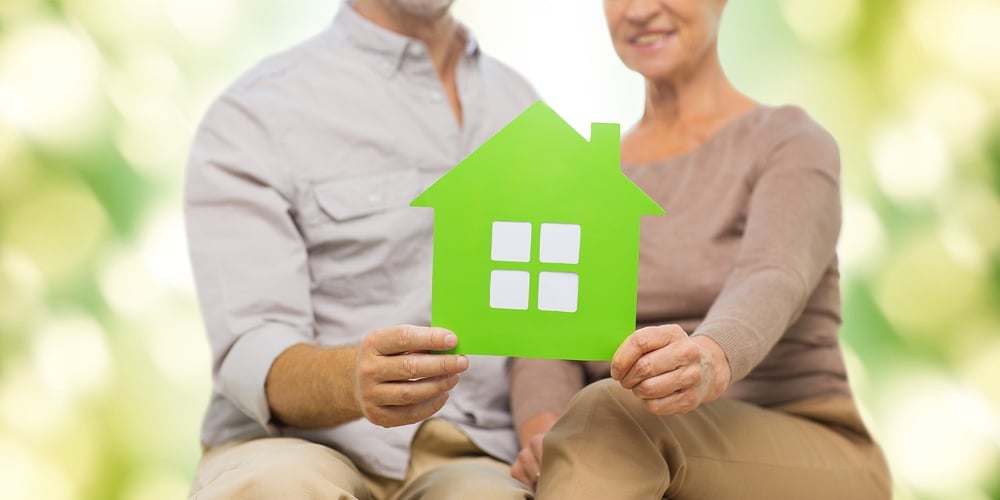Credit unions are always looking for better ways to meet their community’s financial needs. Time and time again, green lending programs have proven themselves to have broad appeal, low default rates, and the potential to help address one of the most urgent issues of our era.
Although green loans—those used for projects or investments that offer tangible environmental benefits—have been around in some form since the 1970s, they’ve gotten more attention in recent years.
It makes sense. According to research from Forrester, most US adults describe themselves as environmentally conscious, and the global green market is expected to total $326 trillion by 2050. With the increasing number of climate disasters, as recently exemplified by Hurricanes Helene and Milton, and the growing awareness of the human impact on climate change, more people are interested in taking steps to make a difference, like purchasing electric vehicles, installing solar in their homes, improving weatherproofing, and more.
While those changes and improvements will cut consumer expenses in the long run—in addition, of course, to having less impact on the environment—they often involve significant upfront costs. Affordable financing can help make the transition to green possible, especially for your most vulnerable members.
If your credit union doesn’t yet offer green loans, the time is ripe to make the leap. Here are five reasons why green lending should be part of your 2025 strategic planning conversation:
- Credit unions can leverage new opportunities for government funding
Much of the current excitement around green lending is linked to the Inflation Reduction Act (IRA) announced in 2022, which included $369 billion in climate and clean energy investments. A component of this funding that’s of special interest to those investigating green lending: the $27 billion Greenhouse Gas Reduction Fund (GGRF).
GGRF focuses on providing funding for clean energy and energy efficiency improvements among “low-income and disadvantaged” communities, which, according to the U.S. Environmental Protection Agency, are more likely to be in areas affected by flooding, poor air quality, and extreme temperatures. GGRF delivers a powerful two-fer by addressing both climate and equity.
According to this post from Inclusiv, a non-profit that helps low- and moderate-income people and communities achieve financial independence through credit unions, GGRF could drive more than $200 billion in clean, efficient energy investments. These investments will help create well-paying jobs, reduce air pollution, improve health outcomes, and lessen energy cost burdens in communities of color.
Credit unions have already jumped in to leverage the power of GGRF. Urban media platform Next City reports that The Justice Climate Fund is leading the effort. Steered by the African American Alliance of CDFI CEOsand theCommunity Builders of Color Coalition, a network of dozens of financial institutions and advocacy groups led by people of color, this group is bringing together community development financial institutions (CDFIs) and community lenders to use GGRF funds as effectively as possible.
- Interest is broad and not confined to a specific demographic group
Solar panels and electric vehicles may have a reputation for being somewhat elitist, but there is widespread interest and need across demographics. A 2023 survey from McKinsey found that consumers want their financial institutions to act as advisers and enablers when it comes to going green, and don’t have strong perspectives about which green products best suit their needs.
More specifically:
- 39% of respondents were interested in enrolling in a climate-linked financial product.
- Green banking products appeal to consumers across income levels, savings account balances, and community types.
- Many consumers will give up yield in savings accounts in exchange for credible promises those funds will be used for green lending.
- There is considerable potential for increasing your credit union’s loan portfolio
A 2022 joint report from Filene Research Institute and the Ceres Accelerator for Capital Markets described the opportunities green financing could present as “significant.”
Those could include partnering with state governments, utilities, and the non-profit sector to provide green loans to low- and moderate-income members. Consumer lending, as per the Filene/Ceres report, could include:
- Auto loans for hybrid and fully electric vehicles
- Home loans for energy-efficiency upgrades like solar and HVAC improvements
- Green savings and money market accounts that leverage deposits to invest in renewable energy, disaster preparedness, and climate-friendly updates
- Green credit cards that reward members for purchasing eco-friendly products and services
The report also suggested investigating business opportunities such as providing services, loans, and investments to businesses and nonprofits that offer green products/services, are working to improve the efficiency of their facility or processes, are in the business of building energy-efficient homes/buildings, or are developing large-scale products related to sustainable energy or climate adaptation.
- Delinquency and loss rates are low
In addition to creating new portfolio opportunities, green loans tend to have good payback. According to a report from the State & Local Energy Efficiency Action Network (SeeAction), which studied the results of four green lending programs, delinquency and loss rates for energy-efficiency loan portfolios were low compared to unsecured consumer loans and comparable to rates for prime auto loans.
What drove the reliable payback? The SeeAction report hypothesized that each of the following could have had an impact:
- Energy cost savings help the consumer to service their debt.
- These borrowers might share characteristics that make them more likely to repay their loan, including good credit scores or personality traits like being frugal or paying close attention to costs.
- Borrowers who made home improvements viewed these as an investment in their most valued asset, their home.
- Borrowers saw these improvements as doing something good for the environment, and not paying the loan back would lessen their “good deed.”
- The programs studied in the report had strong structures and safeguards.
The research also showed that low- and moderate-income households participated in these loans and had strong repayment levels. Blake Jones, a founding board member of Clean Energy Credit Union told us on The Remarkable Credit Union podcast, “Clean Energy Credit Union… [has] originated over almost 13,000 clean energy loans, totaling almost 250 million, and we only have one to two dozen defaults. And half of these are low income borrowers, so really low delinquency and default rates.”
- It’s a largely untapped opportunity for differentiation
The aforementioned McKinsey survey also found that consumers currently perceive little differentiation between financial institutions when it comes to this green lending. That means your credit union can differentiate from other financial institutions in your area and also that credit unions as an industry can differentiate from other financial service providers.
According to 2022 research conducted by Inclusiv, 338 U.S. credit unions, about 7 percent, either offered or were in the process of developing green loan products. Credit unions have a history of boldly embracing products and services that make a difference in their communities, especially when serving the most vulnerable. Green lending is an excellent way to continue this tradition.
As Inclusiv President and CEO Cathie Mahon told us recently, “This is what credit unions have been made for and built to do. We are deep lenders, we are committed and connected to our communities, and we deliver the kinds of products and services that people need to improve their lives. And this is our next frontier.”
So how can credit unions take the lead? As your credit union investigates how to build green lending into its portfolio, here are five key considerations to take into account:
- Educate on climate risks
Consider the fires, floods, droughts, and hurricanes of this past year alone—many of which set records—and it’s easy to see that the climate is changing in many geographic areas. Share information about climate risks in your area to help convey how serious this issue is. According to the aforementioned Filene/Ceres report, 60% of US credit unions are in vulnerable locations.
It's also important to educate members and staff on the link between their actions and environmental impacts. For instance, Clean Energy Credit Union has found that its average solar loan offsets 28,000 pounds of carbon per year—the equivalent of driving a gas car over 31,000 miles or burning over 14,000 pounds of coal—and shares these stats.
- Prioritize vulnerable communities
As we discussed earlier, low-income consumers, especially people of color, are more likely to live in areas affected by climate change and energy-related pollution, and to live in housing that’s older and more expensive to heat and cool.
According to the Environmental Protection Agency, “The impacts of climate change that we are feeling today, from extreme heat to flooding to severe storms, are expected to get worse, and people least able to prepare and cope are disproportionately exposed.”
The most vulnerable also face the highest costs for energy-related expenses. According to the American Council for an Energy-Efficient Economy (ACEEE), a quarter of low-income U.S. households spend more than 15% of their income on energy bills—and the ACEEE defines energy costs that exceed 10% of a household’s income as a severe burden. The ACEEE 2024 policy brief found that low-income residents, Black households, and Hispanic households spend a higher share of income on energy than other households.
Going green would improve the health of these households and cut their energy costs, but because these communities have not historically been prioritized and upfront costs can be high, energy adoption rates are low.
According to a 2022 report from the Lawrence Berkley National Laboratory (LBNL), green improvements tend to be made by educated white people who live in higher-value homes. Unsurprisingly, the LBNL report found the median income of those who adopted solar had household incomes of about $110,000/year in 2021.
There have been some efforts at the utility level to make energy-efficiency improvements more affordable to consumers. Still, a 2022 report from the ACEEE found that while 27.5% of all U.S. households are low-income, they receive just 13% of the electric gas and electric utility spending on energy efficiency.
Credit unions should prioritize filling the gap with affordable loans that make green and energy efficient improvements possible for lower income households. They’ll help members and stand out from the financial services competition. In this article from Next City, Clean Energy Credit Union CEO Terri Mickelson stressed that banks don’t tend to be interested in the solar loans these market segments typically need, making this a perfect place for credit unions to step in.
- Put a “clean and green” lens on your current loan products
Most credit unions are able to take a green approach without starting from scratch. They can leverage existing products to accommodate green and energy-efficient goals.
Neda Arabshahi, Vice President of the Inclusiv Center for Resiliency and Clean Energy, pointed out that “there have been many credit unions that have gone out on their own and started to offer green loan products. They have often realized they had a product that was very similar. For example, an energy efficiency home upgrade is very similar to other kinds of home improvement projects. If they already had a home improvement loan, it was really easy to shift that into a home energy efficiency loan. If they already have a vehicle loan, it’s not that big of a stretch to offer an electric vehicle loan.”
- Survey your community
As with any new product, you’ll want to make sure to bring your members and community into the conversation. As Arabshahi emphasized, credit unions should seek out ways to tailor their offerings to meet immediate needs. Two frameworks to consider are: 1) how you can support members’ efforts to reduce their carbon footprints, and 2) how you can help them prepare for climate-related disasters.
EastRise knows that its members in Vermont are particularly worried about home fuel costs during the winter months, costs that of course disproportionately affect low- and moderate-income households. To that end, it has designed a Home Energy Loan program for weatherization projects, cold climate heat pumps, wood and pellet stoves, solar hot water installations, and advanced modern wood heating systems that offers 0% interest options for low- and moderate-income members.
- Investigate the opportunity CCIA presents
The Clean Communities Investment Accelerator (CCIA) program is a critical component of GGRF. This program has access to $6 billion in funds and 100% of the capital distributed through this program must be devoted to reaching and serving low-income and disadvantaged communities. CCIA funds are available to CDFIs, credit unions, green banks, and minority depository institutions that deliver green products and focus on the underserved.
Inclusiv, for instance, recently received an award of $1.87 billion through CCIA, which it will use over the next four to six years to fund capitalization grants, technical assistance grants, and infrastructure support for community-based lenders. This will, in turn, allow them to deliver clean energy solutions in their communities, which, according to Mahon, could include everything from an energy-efficient appliance to an electric vehicle, solar panels to large-scale project financing. Learn all about Inclusiv’s Green Lending Grant program here.
Poor Kermit might still have a hard time being green, but when it comes to green lending, there is more support and opportunity for credit unions than ever before. Hurricanes Helene and Milton have only underscored the devastating effects of climate change and the extent to which natural disasters will continue to threaten our homes, livelihoods, and communities.
It’s time to take action, and that time is now.
Is your credit union looking to redesign its website? At PixelSpoke, an employee-owned cooperative, we draw from our deep expertise in the credit union industry, UX/design best practices, and digital marketing trends to create easy-to-use, high-converting, award-winning websites. If you’re interested in learning more, feel free to reach out using the form below:








